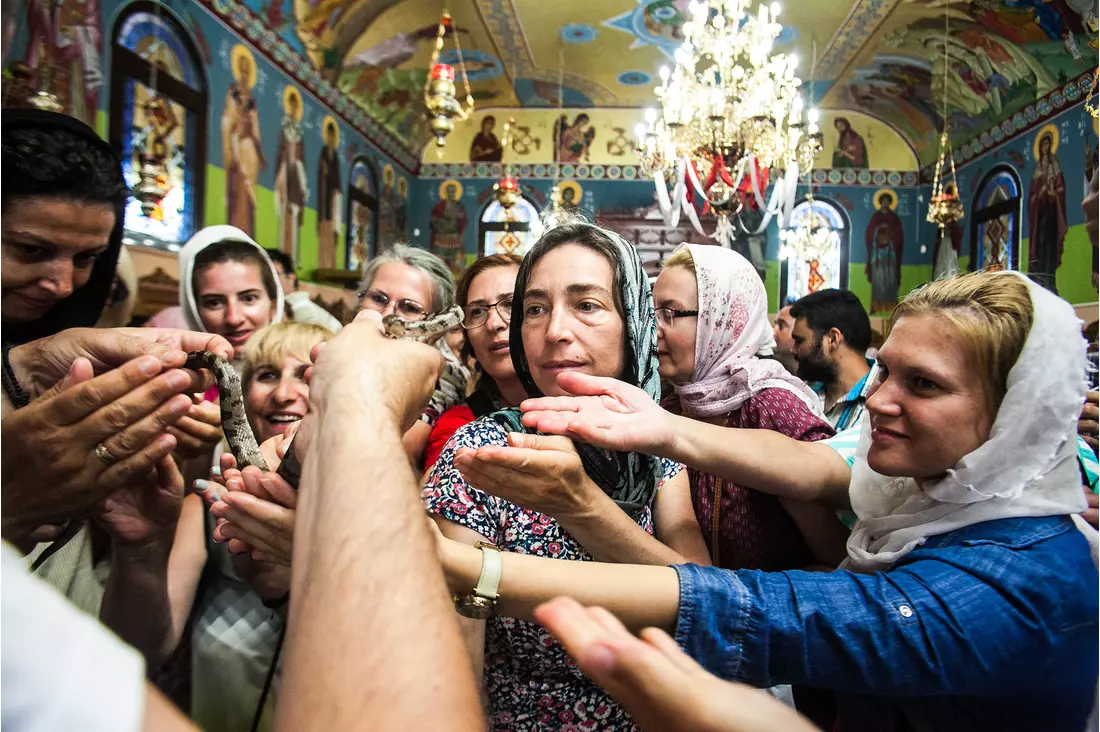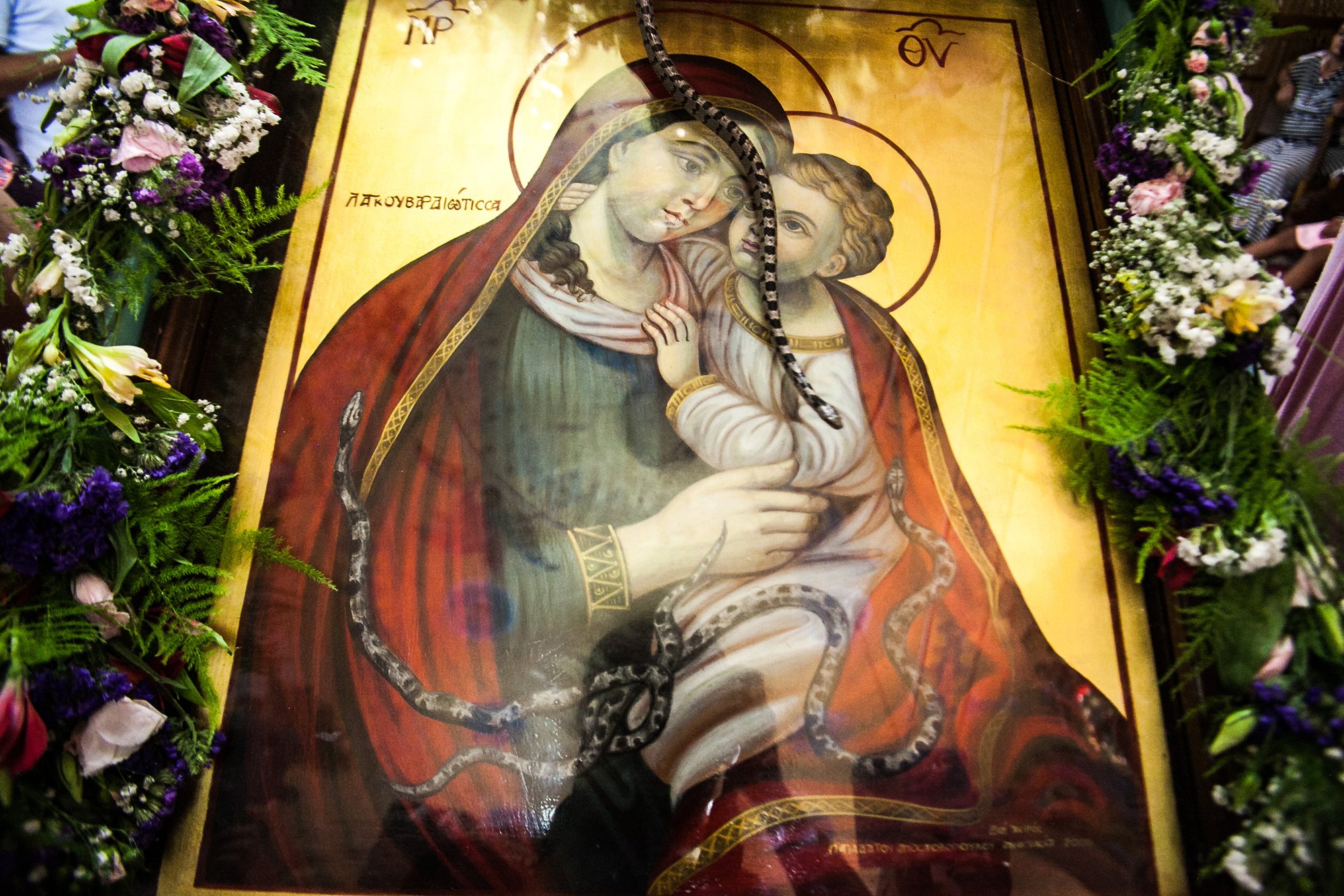The small snakes, silky and with a cross on the back, seem to appear every year out of nowhere, gather in the church and then disappear after the liturgy on the day of the Feast of the Ascension. If we consider that the snakes, since their first appearance, have shown up inside and outside the church every year except 1940 and 1953 (when the island was occupied by the Axis forces and shaken by a tragic earthquake, respectively), their presence this year gives us hope.
The appearance of snakes on the icon of the Virgin Mary in Markopoulo has a distant origin, linked to miraculous events handed down orally. There are therefore slightly different versions of the legend, all however full of those mysticism and attachment to traditional values that characterize the truest and most authentic Kefalonia.
Where the church stands today, once stood a nunnery. Legend has it that one day, while the pirates were trying to plunder the monastery where the icon was kept, the nuns invoked the protection of Panagia and the monastery was surrounded by snakes, which put the invaders to flight. According to other sources, it was the nuns themselves who were transfigured into snakes.
If according to the Christian tradition the snake symbolizes temptation and sin, in ancient Greece it was a symbol of regeneration and healing. It doesn't matter if the appearance of snakes may have a scientific motivation, in Markopoulo pre-Christian spirituality blends with Orthodox religiosity to create a traditional event that enchants and fascinates and still today attracts hundreds of pilgrims and, why not, travellers interested in discovering the island in its most authentic and characteristic aspects.
Pictures: Michael Pappas (https://pculiar.com/events/virgin-marys-snakes)




